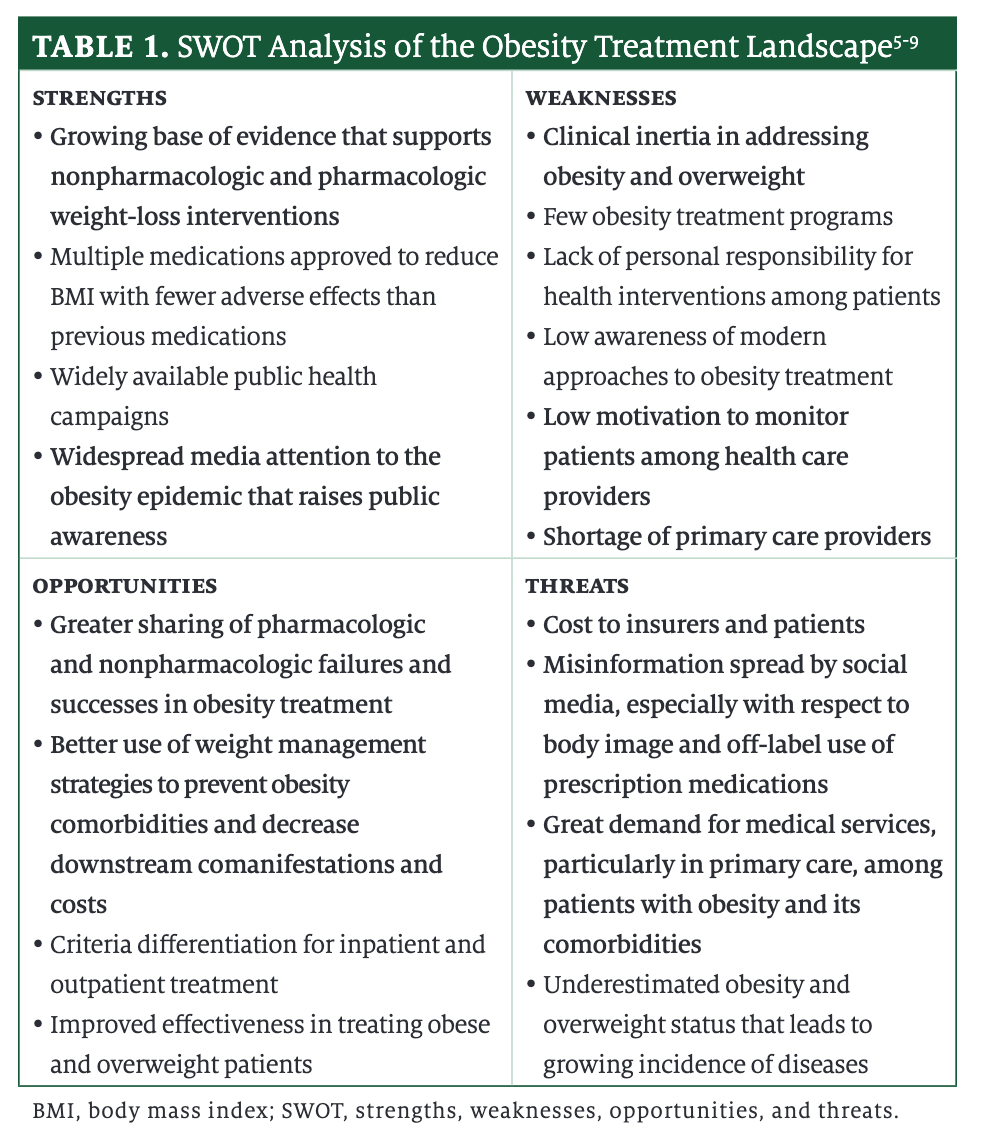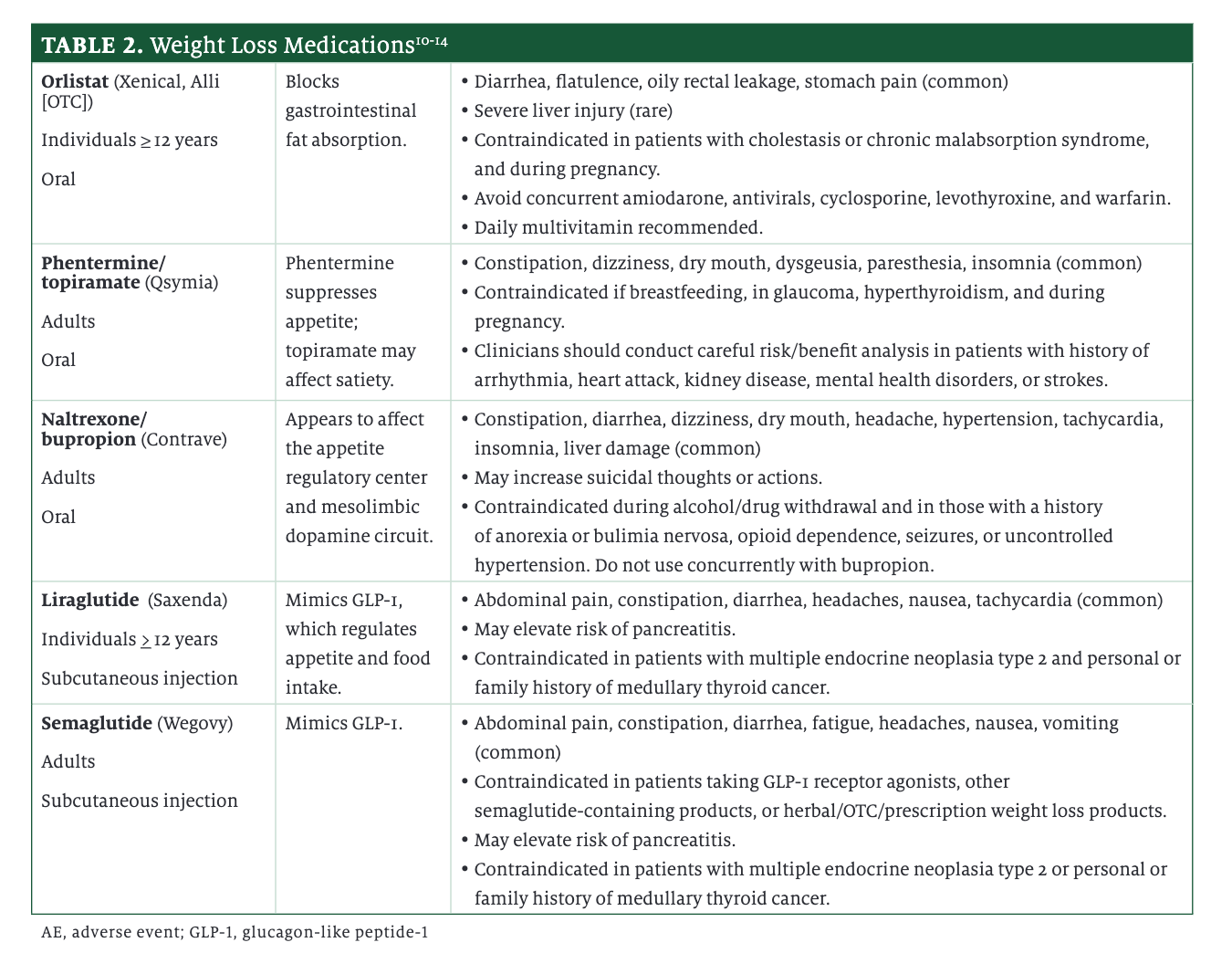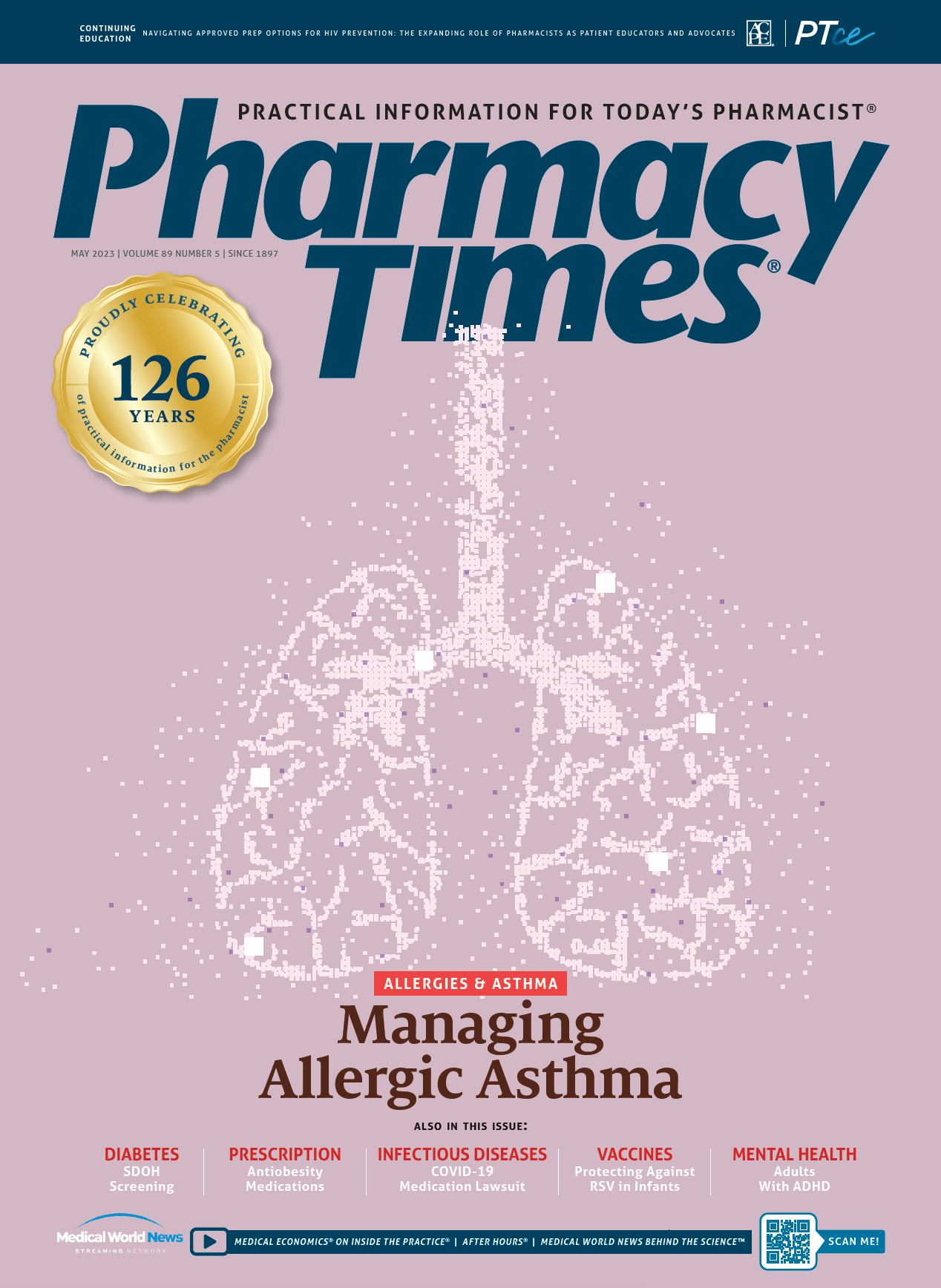Publication
Article
Pharmacy Times
Manage Patient Expectations About Weight Loss Drugs
Author(s):
Options abound, but pharmacists should address barriers to prevent inequities for patients when they seek treatment.
Obesity—defined as having a bodymass index (BMI) of 30 or more—is a national epidemic in the United States, affecting 1 in every 4 individuals.1 For years, clinicians have emphasized the importance of eating less, exercising more, and making good dietary choices as the cornerstone of a reliable weight loss program.
Today, however, investigators are increasingly aware that weight gain is determined by more than the difference between calorie intake and expenditure (the energy balance model). They understand the influence of brain signals on the endocrine, metabolic, and nervous systems in response to individual energy needs and environmental factors.2
It is clear that genetic differences play a significant role in this more accurate definition, with heredity accounting for approximately 75% of BMI variability.3,4
Getting Involved
Given the information—and misinformation—exploding on social media about the off-label use of semaglutide,5 pharmacists need to know more about weight loss medications, which will become progressively more important as investigators continue to identify the molecular pathways that contribute to weight gain. Table 15-9 lists the strengths, weaknesses, opportunities, and threats (SWOTs) associated with obesity treatments, highlighting those that are most important for pharmacy professionals to be aware of.

Mechanisms of Action
Prescription antiobesity drugs have different mechanisms of action. Most are approved for adults with BMIs exceeding 30, or 27 in patients subject to comorbidities, such as hypertension and type 2 diabetes. All come with recommendations about making concurrent lifestyle modifications for best results. Commonly used medicationsappear in Table 2.10-14 The FDA has also approved benzphetamine (Regimex), diethylpropion, phendimetrazine, and phentermine, but they are less frequently used for this indication. In addition, the FDA recently approved setmelanotide (Imcivree) for those over 6 years old whose obesity is caused by rare genetic deficiencies.15

Implications for the Pharmacy Team
Less than 2% of eligible patients receive prescriptions for weight loss medications, and those who are female, heaviest, insured, and younger are more likely to be treated.16 Insurance coverage has been a particular barrier to access for patients needing weight loss medications, but insurers are covering them more often and sometimes offering a cash discount price.7 Pharmacy staff members can also help patients find assistance programs.
As noted in Table 1, clinicians often need help monitoring patients. Pharmacists should watch for drug interactions or signs that patients need closer supervision. They can also correct misinformation and educate other clinicians and patients about the appropriate use of these drugs.
Conclusion
There are more options for obesity management than ever, but unless barriers are addressed, patients will experience inequities when seeking treatment. Pharmacists can increase awareness about weight concerns and appropriate treatments and teach others about the pros and cons of medication.
References
1. Hales CM, Carroll MD, Fryar CD, Ogden CL. Prevalence of obesity and severe obesity among adults: United States, 2017–2018. NCHS Data Brief, no 360. National Center for Health Statistics; 2020. Accessed March 17, 2023. www.cdc.gov/nchs/products/databriefs/db360.htm
2. Hall KD, Farooqi IS, Friedman JM, et al. The energy balance model of obesity: beyond calories in, calories out. Am J Clin Nutr. 2022;115(5):1243-1254. doi:10.1093/ajcn/nqac031
3. Elks CE, den Hoed M, Zhao JH, et al. Variability in the heritability of body mass index: a systematic review and meta-regression. Front Endocrinol (Lausanne). 2012;3:29. doi:10.3389/fendo.2012.00029
4. Hainer V, Stunkard A, Kunesová M, Parízková J, Stich V, Allison DB. A twin study of weight loss and metabolic efficiency. Int J Obes Relat Metab Disord. 2001;25(4):533-537. doi:10.1038/sj.ijo.0801559
5. Johnson A. ‘Ozempic face’ explained: why it happens and how to fix it. Forbes. February 1, 2023. Accessed March 22, 2023. https://www.forbes.com/sites/ariannajohnson/2023/02/01/ozempic-face-explained-why-it-happens-and-how-to-fix-it/
6. Marlene C, Christos MS. Advances in physiology, design and development of novel medications changing the landscape of obesity pharmacotherapy. Metabolism. 2023;142:155531. doi:10.1016/j.metabol.2023.155531
7. Fujioka K, Harris SR. Barriers and solutions for prescribing obesity pharmacotherapy. Endocrinol Metab Clin North Am. 2020;49(2):303-314. doi:10.1016/j.ecl.2020.02.007
8. Simon R, Lahiri SW. Provider practice habits and barriers to care in obesity management in a large multicenter health system. Endocr Pract. 2018;24(4):321-328. doi:10.4158/EP-2017-0221
9. Palanca A, Ampudia-Blasco FJ, Calderón JM, et al. Real-world evaluation of GLP-1 receptor agonist therapy persistence, adherence and therapeutic inertia among obese adults with type 2 diabetes. Diabetes Ther. 2023;14(4):723-736. doi:10.1007/s13300-023-01382-9
10. Xenical. Prescribing information. Roche Pharmaceuticals; 2009. Accessed April 24, 2023. https://www.accessdata.fda.gov/drugsatfda_docs/label/2009/020766s026lbl.pdf
11. Qsymia. Prescribing information. Vivus Inc; 2012. Accessed April 24, 2023. https://www.accessdata.fda.gov/drugsatfda_docs/label/2012/022580s000lbl.pdf
12. Contrave. Prescribing information. Takeda Pharmaceuticals America, Inc; 2014. Accessed April 24, 2023. https://www.accessdata.fda.gov/drugsatfda_docs/label/2014/200063s000lbl.pdf
13. Saxenda. Prescribing information. Novo Nordisk AS; 2010. Accessed April 24, 2023. https://www.accessdata.fda.gov/drugsatfda_docs/label/2018/206321s007lbl.pdf
14. Wegovy. Prescribing information. Novo Nordisk AS; 2021. Accessed April 23, 2023. https://www.accessdata.fda.gov/drugsatfda_docs/label/2021/215256s000lbl.pdf
15. Imcivree. Prescribing information. Rhythm Pharmaceuticals, Inc; 2022. Accessed March 20, 2023. https://rhythm-vault-digital-publishing-production.s3.amazonaws.com/IMCIVREEPrescribingInformation.pdf
16. Zhang S, Manne S, Lin J, Yang J. Characteristics of patients potentially eligible for pharmacotherapy for weight loss in primary care practice in the United States. Obes Sci Pract. 2016;2(2):104-114. doi:10.1002/osp4.46
About the Author
Jeannette Y. Wick, MBA, RPh, FASCP, is the director of Pharmacy Professional Development in the Department of Pharmacy Practice at the University of Connecticut School of Pharmacy in Storrs.

Newsletter
Stay informed on drug updates, treatment guidelines, and pharmacy practice trends—subscribe to Pharmacy Times for weekly clinical insights.





